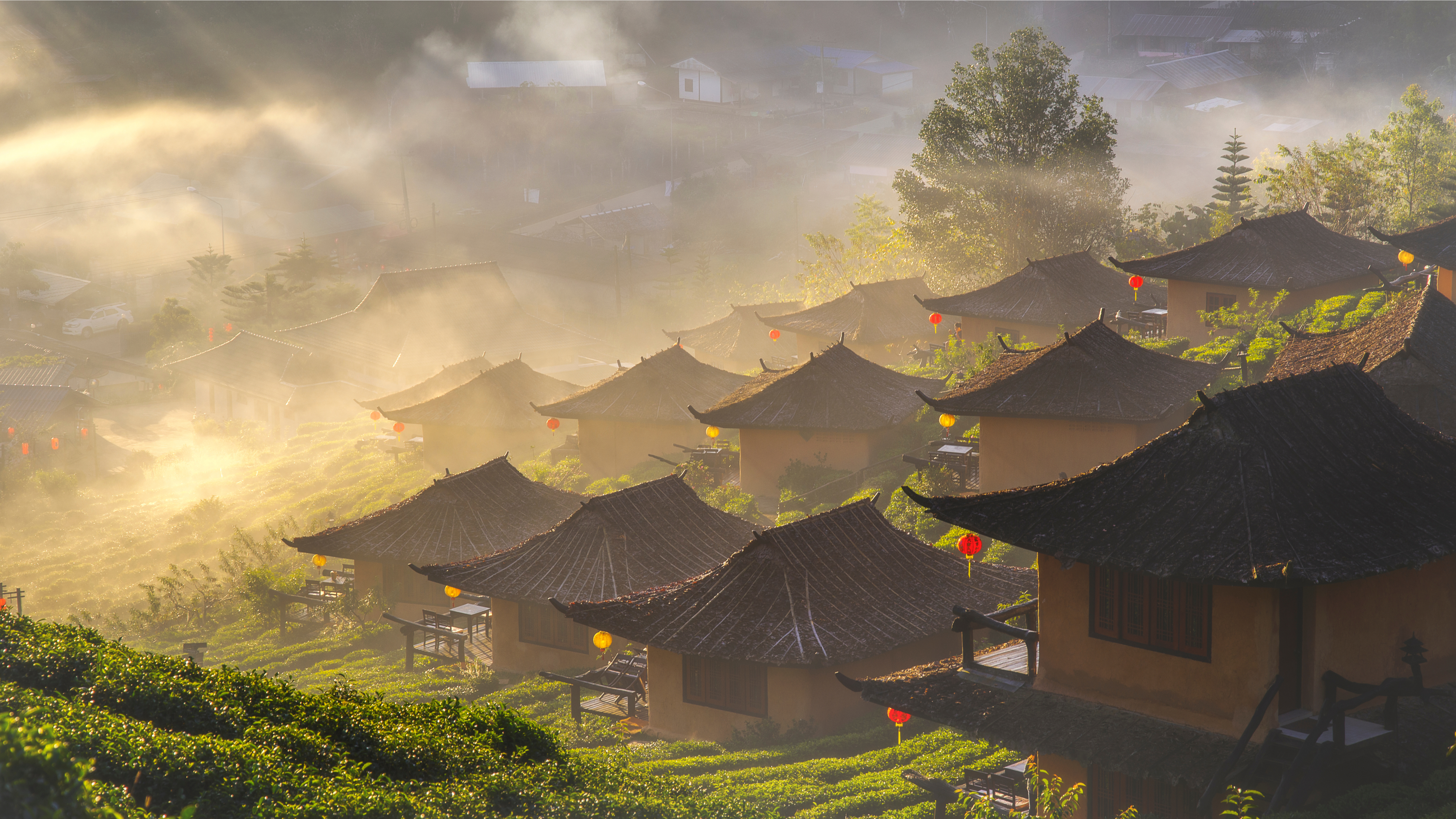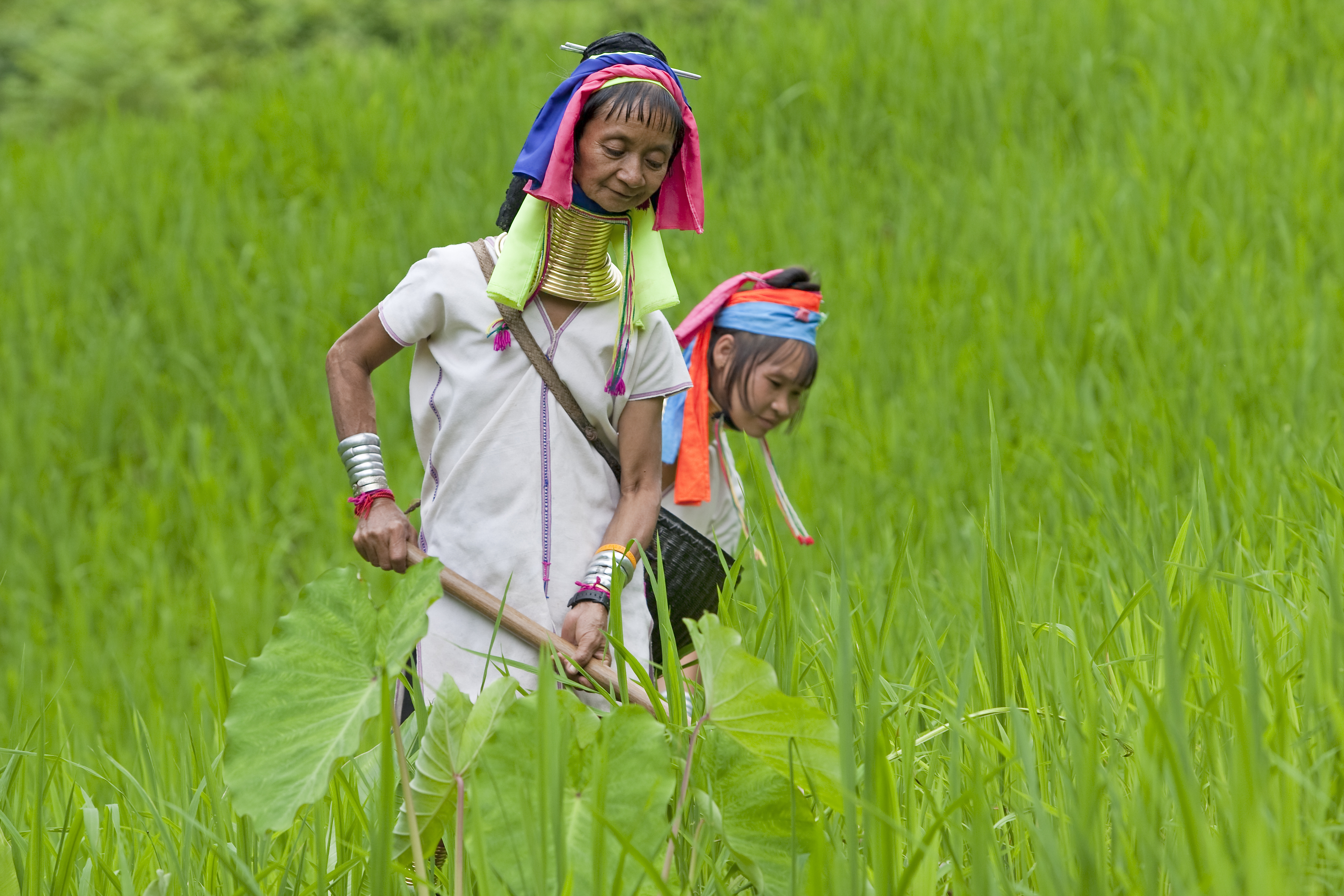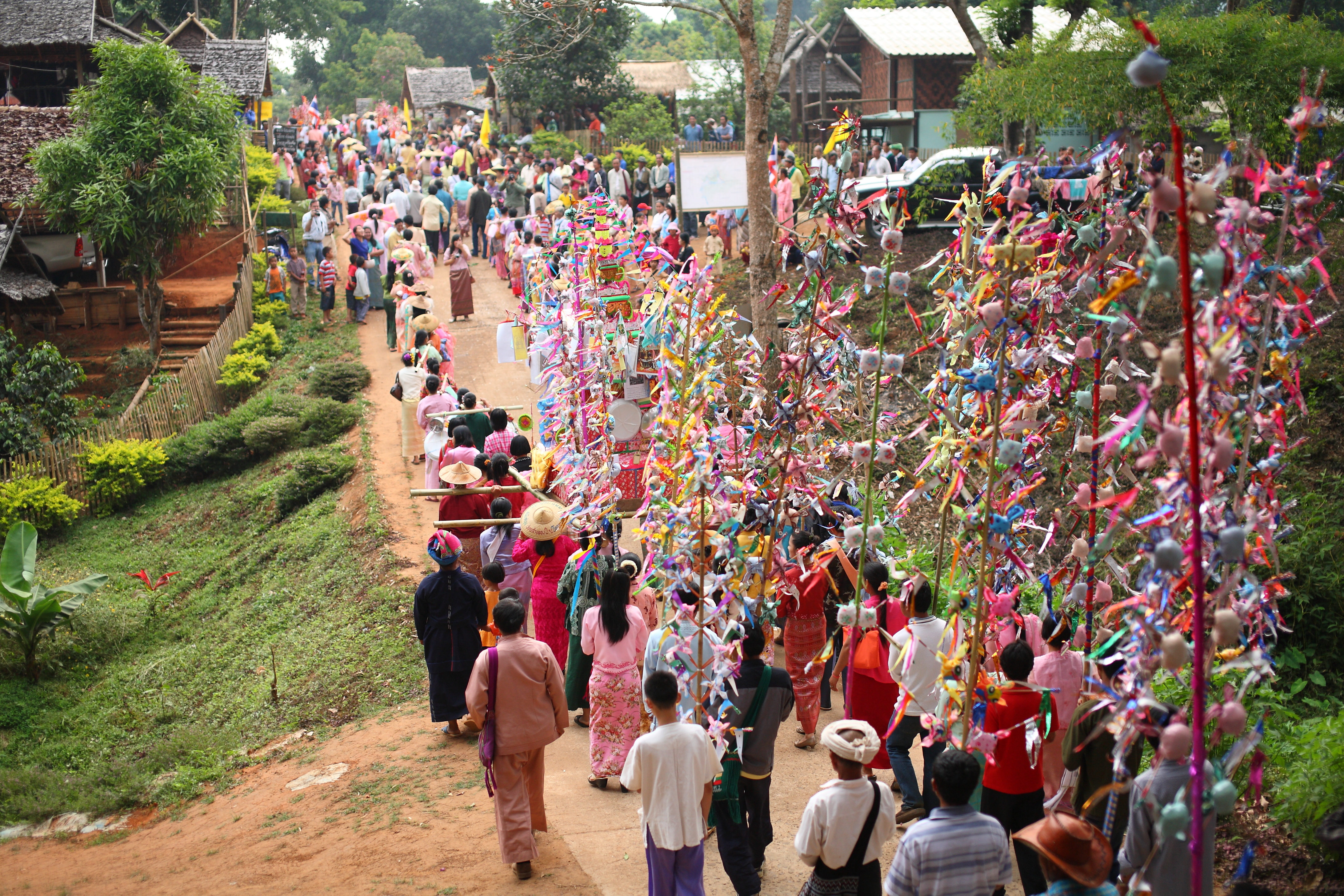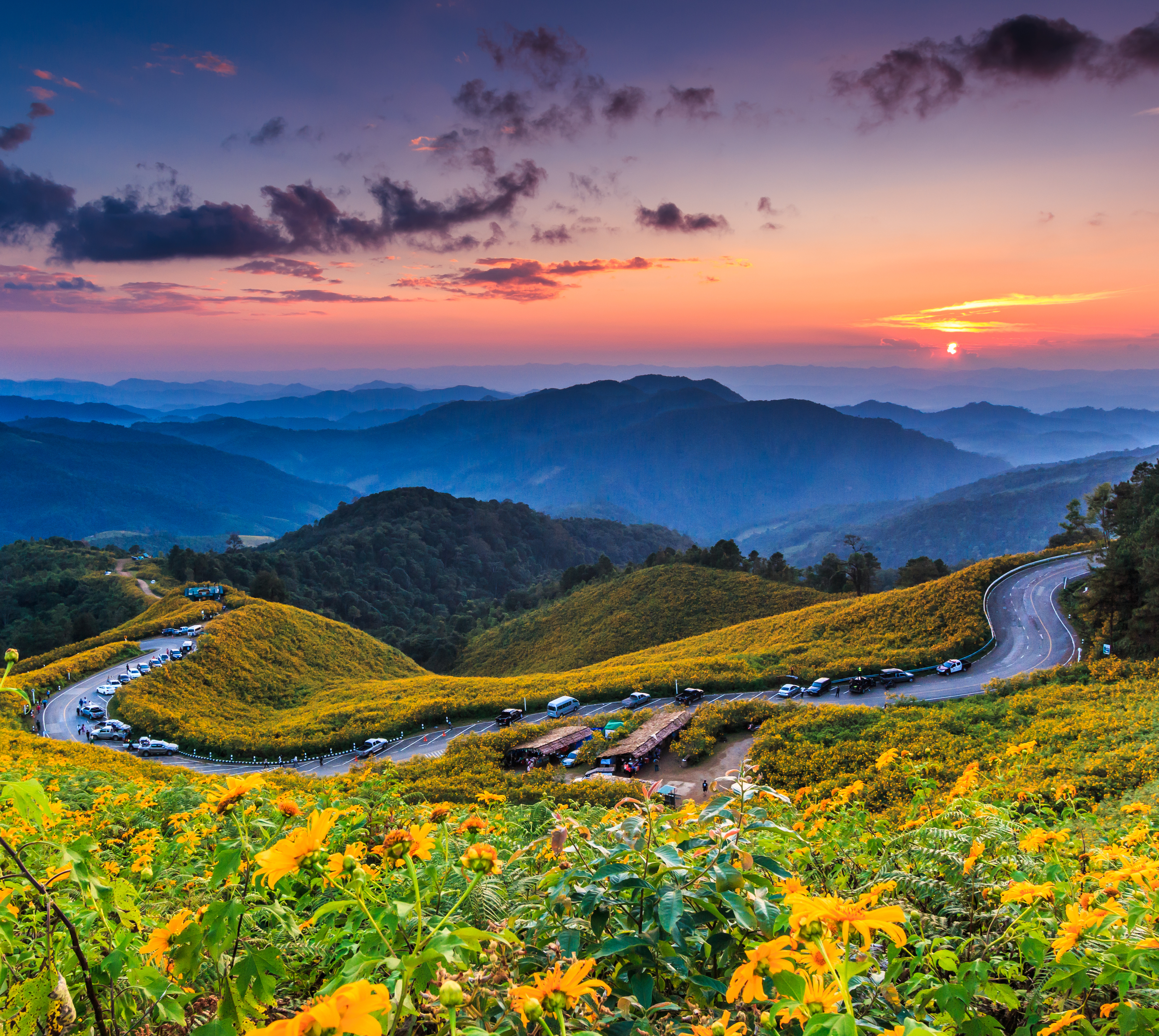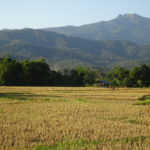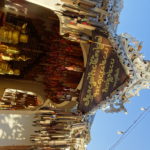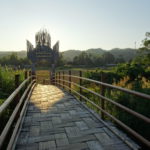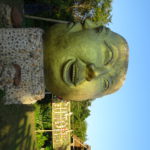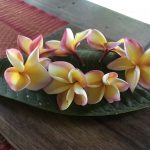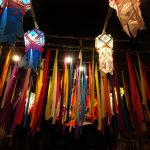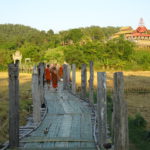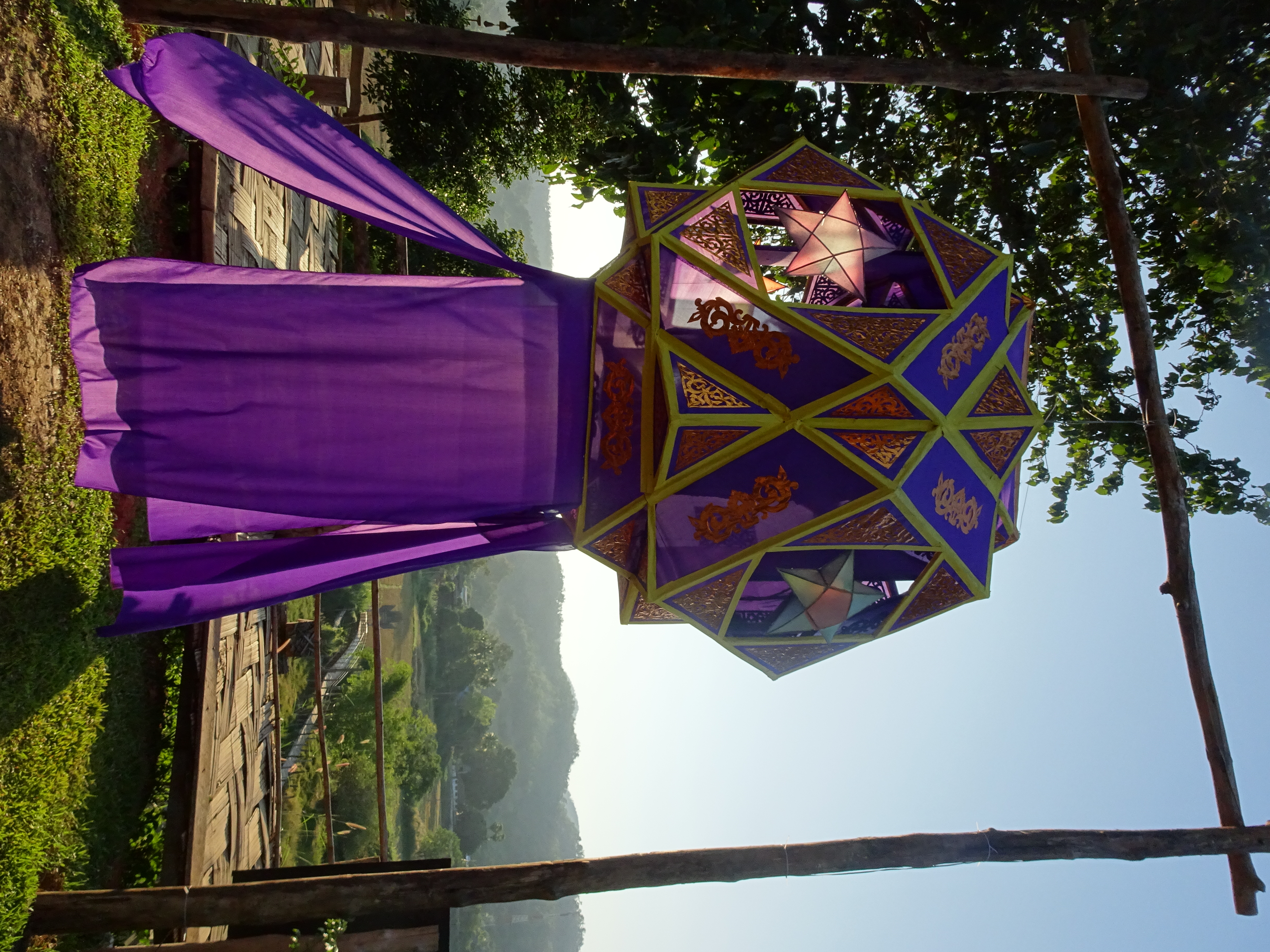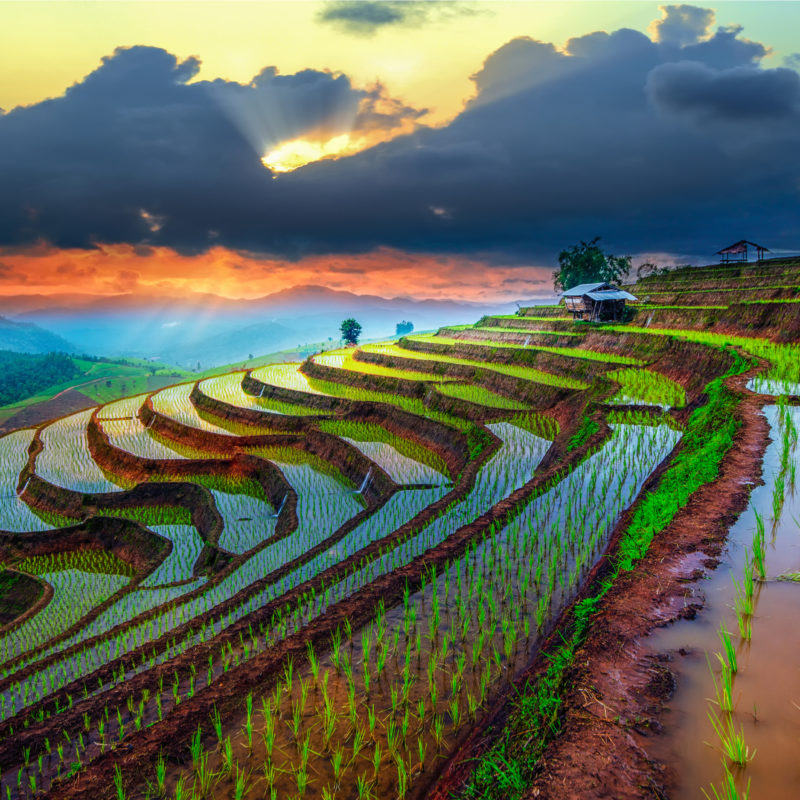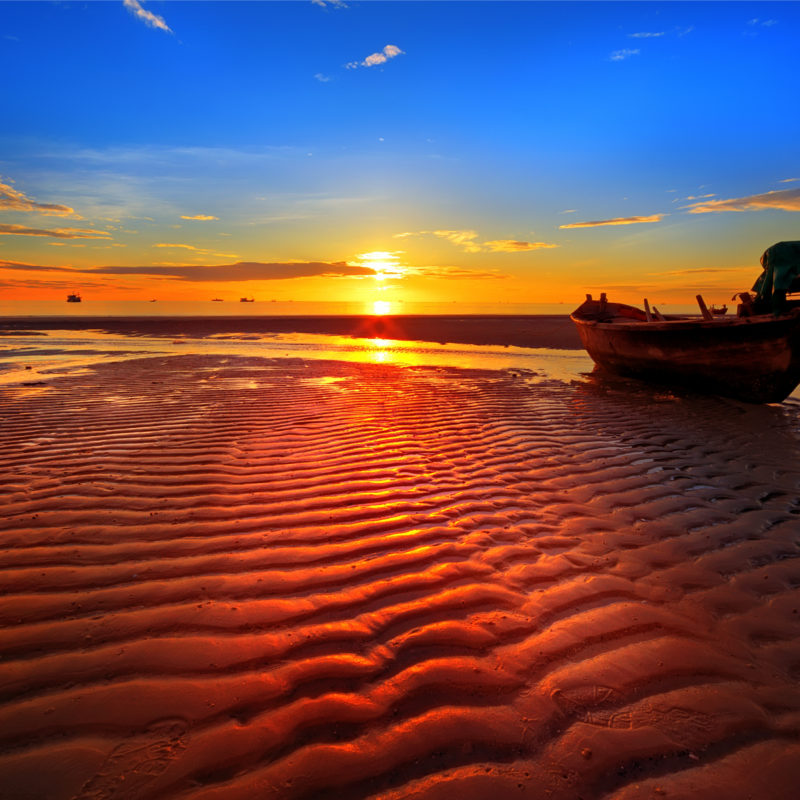Mae Hong Son province, in the Northwest of Thailand, is truly a hidden gem. Most people have never heard about this beautiful province situated next to Chiang Mai, full of lush jungle, wildlife, and breathtaking views. It’s the most mountainous province of Thailand, where extensive mountain ranges make up a big amount of its territory – with over 80% of Mae Hong Son covered with untouched, wild forest. Being the most northwestern province of Thailand, it directly borders Myanmar and is divided into 7 districts. Mae Hong Son town, the capital of this remote province, is nicknamed “City of three mists” thanks to the frequent fog that is occurring in this rural province all year round. The misty weather gives this province its magical, calm atmosphere which makes it so easy for you to be able to detach and recharge while being surrounded by spectacular, raw nature and landscapes. Next to countless, fascinating waterfalls, you can find forested caves and tropical hot springs, which often can be reached by a hike through the thick, green forest. Because of this adventurous, rural vibe you can experience here, the city of Pai, situated in a valley at the river Pai, is a town popular amongst backpackers that like to gain perspective on this special side of Thailand.
This province is also home to many ethnic communities, like Hmong, Akha, Lisu, Yao, and Kayan, that live traditional ways of life in their villages, often up in the mountains. You are very welcome to have meaningful encounters with them and learn about the stories they have to tell. In villages where tourism is appreciated and managed in a sustainable way that empowers the villagers and their traditions, you can truly experience their culture, if you are open to it! One example is Huay Pu Keng, the village that is home to people of the “long-neck” tribe Kayan. To achieve empowerment through tourism and cultural exchange with visitors, they could acquire the transition towards community-based tourism. If you want to learn more about Huay Pu Keng, click here.
With its remote location and the low amount of tourists that generally come to Mae Hong Son, there are hardly any crowds and it feels like it is low season all year round
Why don’t more people travel to Mae Hong Son during the low season months?
Weather highly influences the number of tourists visiting Mae Hong Son over the different seasons of the year. As in all parts of Thailand, also the climate in Mae Hong Son can be distinguished into the dry and rainy season, with November until February marked as the cooler dry season and March until May the hot and dry period. From June until October, the rainy season can be identified by highly humid air and overcast skies.
Generally, with its hilly landscapes, Mae Hong Son has cooler temperatures than other provinces in Thailand, which is often perceived as more pleasant to travel in. Therefore, the months from November to February are considered most favorable for travelling to this province. Climate-wise, the day-time temperatures are comfortable, and skies are mostly blue and sunny. In the evenings and night, it can cool down a bit, and depending on the elevation, you might even need long sleeve shirts.
The months of March and April are very dry and hot, with smoky air that is caused by the annual agricultural and forest fires. Also, still, during the month of May, the temperatures during day and night can get so high, many tourists find this climate to be unbearable and avoid coming here.
Following up on this comes the wet season: From June until October, monsoons and strong, but brief showers can surprise you any time of the day, but mostly in the afternoons and at night. On a positive note, Mae Hong Son experiences less strong rain showers than other provinces of Thailand.
Another factor influencing the preference of travelling during the winter months of November till February is the holidays around Christmas and New Year. Many have time off of work and enjoy using this free time to travel and seek adventure in foreign places.
Hence, the general recommendation for visiting Mae Hong Son is approximately between the months of November and February. Though, for the hardy traveller who likes very hot weather, the period from March until May is a good time to go, since you will be one of the only travellers there. If you are more into hot weather cooled down by regular tropical showers, June until October is your best option to go to Mae Hong Son, with fewer travellers than in high season. Thai and Foreign travellers mostly go to Mae Hong Son from November until February, but since it is one of the best-kept secrets, you will definitely not encounter the same crowds as in popular places like Chiang Mai or Chiang Rai.
What are the main advantages of travelling to Mae Hong Son in the low season?
When in Mae Hong Son, everywhere you look, you can see beautiful landscapes and wild nature covering the hills and high mountain ranges that act as natural borders to the surrounding areas. Through the rainy weather, the dense jungle thrives and seems even greener and fresher. The lush vegetation with its vibrant colours invites you to explore the untouched forestland. This natural environment provides an abundance of gorgeous waterfalls and streams, which are in their prime during the rainy season. Next to that, canyons, caves, hills, and fields are waiting to be discovered. These spaces all provide natural places of retreat to get away from the crowds and experience the rural lifestyle with little access to modern conveniences. Of course, that’s just if you choose to do so! Also, more luxurious places and hotels can be found in Mae Hong Son, and during the low season these are much cheaper and calmer than during the popular times for touristic visits. Sightseeing, for example visiting one of the breathtaking temples or vivid markets, is much more comfortable during this time of the year!
The farming season is mostly during the rainy months, as well. That means that you can join villagers in many different villages around the province while they are planting or harvesting crops, like black sesame, mushrooms, and bamboo shoots.
Are there any disadvantages to travelling during the low season?
In the bigger cities in Mae Hong Son (only very few), the streets occasionally get flooded due to the heavy monsoon storms that can occur. However, this does not happen too often, and the locals know how to minimize the effects this has on their daily life. Travelling on the remote, hilly routes can get tough, but usually, roads stay accessible, especially during the hot and dry season. Only during heavy periods of rain, roads may become partly inaccessible. It is advisable to go by car instead of motorbike during those periods of time. Additionally, the humidity in combination with the hot temperatures during the wet season can feel unbearable to some travellers, which is important to pay attention to when you are sensitive to this. The party and nightlife in the cities gets slightly less than usual during the low season. However, it is not common to travel to Mae Hong Son for big party nights anyway.
Are there any festivals or events which occur during the low season months which may be of interest?
In Mae Hong Son, festivals are celebrated during both high and low season. Some might be celebrated within each district individually, and some unite anybody who is willing and able to travel to the place of the celebration, bringing together many different backgrounds and beliefs. These festivals are mostly religious, which is why the date of the ceremonies is not adapted to the amounts of tourists on location.
In April, one of the hottest months in Thailand, the traditional Thai New Year festival originally was celebrated by cleaning the house, wearing colourful clothes, bringing food to monks and ancestors, and sprinkling water as a Buddhist symbol of purification. Nowadays, the Songkran Festival is also known as the water festival as it evolved into a huge water fight where people splash water on each other, dance, and music. In the province of Mae Hong Son, this fest of fun preserves the old traditional ways of celebrating. So by joining those 3 days of fun in Mae Hong Son, you will have that extra special experience where you can dive into old traditions and culture! If you don’t want to get wet, you can also watch sports competitions, or the Miss Songkran beauty contest – there is truly something for everybody.
Around the same month, it is also time for the most important religious Karenni festival of the year, celebrated in the villages that are home to them, for example in Huay Pu Keng. It is called Kay Htoe Boe and their traditional way of celebrating the new year, and to encourage favourable weather, prosperous harvest, peace, and good health. The 3-day ritual includes ceremonially choosing and transforming a tree into a totem pole that gets set up in the village, followed by traditional dancing, singing, eating and drinking. You are welcome to join and get a deep insight into the culture of these tribes.
Another Buddhist festival that is held in April is called Poi Sang Long Festival, and it can be found mainly in the districts Muang and Khun Yuam. The origin of this festival is based on an old legend and is held for boys belonging to the Southeast Asian ethnic group Shan. When ready, they participate in this ritual to be obtained into monkhood. They and everybody attending this ceremony, dress in colourful costumes and many Shan people come together to share this special joyful festivity. If you get the chance, speak to one of the participants to find out more about the meaning of this spectacular day!
Mothersday, which falls on the queen’s birthday on August 12 every year, is a national Thai holiday. The Thai citizens know how to properly celebrate: you can find colorful parades, beautiful decorations, and lots of music and performances in many cities. It is also a great time to try traditional food and join the temple visits. In honour of their mother’s, the Thai children perform songs and dances at school.
The Chong Phara tradition is another local Buddhist tradition that happens every year around October. Chong Phara means ‘Buddha’s castle’ in Shan language and the whole ceremony is held to honour Buddha by building a castle out of bamboo and colorful paper sheets – Buddha’s castle. Here, Buddha is welcomed after arriving back from heaven on earth, after finishing the lent retreat. The day of this festival depends on the moon and corresponds with the end of the three months long Buddhist Lent. When it is time, you won’t believe your eyes how colorful and vibrant the people and streets will look like: costumes, decorations, lights everywhere, as well as traditional performances and other activities.
Top 3 Experiences which must be tried in the low season
1. Visit the Kayan village Huay Pu Keng and learn all about the stories, culture, and ring wearing tradition the Kayan people are happy to share with you. Being the first and only Kayan village that made the transition towards community-based tourism, you can get an authentic insight into their traditional lifestyle and gain new skills while participating in one of the local-led workshops: You can choose to make a cup, bottle, or bell from bamboo, observe the traditional weaving technique and try your own luck with making a hairband. Next to carving a Kayan figure or boat from wood, and creating a bracelet from recycled neck rings there are many more activities you can choose from. You can have a look at the CBT leaflet here. That way, you won’t just gain a new perspective and have meaningful encounters with the villagers, but you can take your own unique souvenir back home, with special one-of-a-kind memories attached to it!
2. Su Tong Pae Bridge (meaning ‘successful prayer’ in the Shan language) is way more than just a bridge. It’s the longest bamboo bridge in Thailand and it is build over the rice fields and leads to a beautiful monastery on top of the hill. In the morning (between 6 and 7 AM) you can experience locals giving alms to the monks. The belief is that all your wishes that you do during the walk over the bridge, will come true.
3. Jungle Caves and waterfalls. A must during a visit to Mae Hong Son is discovering its natural beauty while going for a hike through the lush jungle to one of the caves, waterfalls or any other destination you like. Enjoying the breathtaking nature while exploring the thick forest will take you on a journey to yourself and you will feel one with the nature surrounding you. It will be an unforgettable experience and arriving at the breathtaking cave, stunning glittering waterfall or steaming hot springs will just take your breath away – and the tiring hike will pay off with no doubt!
Low Season Traveller’s ‘insider tips’ for Mae Hong Son
Mae Hong Son has many hidden qualities you should not miss out on when visiting the province, especially not during low season when visitor numbers are even lower and crowds are very unlikely.
Definitely visit one or more ethnic communities, like Huay Pu keng, and participate in their CBT activities. Ask for Aye Muang and Pay Yu, two Kayan guides that can show you around and visit unexplored places in the village with you. If you can, you should also stay for one or more nights (homestay), which will be an extraordinary experience you will never forget! Try their food, and let them tell you their stories, as their background will hold many surprises for you.
Next to that, Buddhism and Shan traditions can be found in many parts of the province, as in the past many Burmese came to the province bordering their country. The sacred sites and Buddhist temples can be found in many places in Mae Hong Son, and especially Wat Phra That Doi Kong Mu can be distinguished by its white, Shan inspired architecture. Being situated on a hill above Mae Hong Son city, you get a spectacular view of the valley the city is located in.
Maybe you heard of the Mae Hong Son loop before? It is a breathtaking motorbike/car tour on a 600 km scenic route through the whole province, starting and ending in Chiang Mai. If you love adventure and do not mind a little rain here and there, this trip is for you. You will be driving mostly on the main roads that are well-paved and not dangerous, even when it rained. How long it will take is completely up to you, and which direction you want to go, as well – as it is a loop, you will start and end up in the same location either way. Some of the stops include ChangChill Elephant Sanctuary, which has moved away from elephant riding and washing: here, elephants can be elephants again. You can see these majestic animals in their natural habitat and observe their behaviour. The next stop is Doi Inthanon National Park, with beautiful natural scenery. The highest point in Thailand, the town of Mae sariang, with its Buddhist temples and hot springs to visit and enjoy some time off the bike/out of the car. The route also includes Mae Hong Son town, the mountain village Soppong and the hippie city of Pai. This last stop is worth a visit on its own, as well. This backpacker town is known for its laid-back artsy vibe and music scene, where you can meet travel-enthusiastic people from all around the world. The Kong Lan (Pai Canyon) is quite a tourist attraction, but luckily during the low season, it is not crowded. During sunset, you can enjoy a panoramic view after hiking up, and if you rather want to relax and spend some time recharging, you can do so in one of the hot spring spots around Pai. And if you go, do as the locals do: They are mostly visiting the Sai Ngam Hot Spring, and bathe in it fully dressed!
The natural sites should never be overlooked, especially in this panoramic province. The Tham Lod (coffin cave) offers a spectacle during sunset, during which you can witness thousands of bats flying out for the night and swifts flying back into the cave. This cave, which got its name from the stone-age coffins found inside, is close to Soppong, so it can be implemented into the Mae Hong Son Loop. Included in those special destinations that will connect you to this province’s core is the Salween (or Salawin) National Park, with the Salween river running through it. The national park, being 720 square kilometres big, is located in the districts of Mae Sariang and Sop Moei and was established primarily to protect the 2800 kilometre long river and the natural environment surrounding it. Especially for the indigenous tribes, the river is of high importance for traditional and practical means, for example for transportation. With its establishment, they could gain new hope, therefore also called ‘Salween Peace Park’. During a visit, you can stay in the accommodations provided within the park and go for a 46 km hike from the park headquarters through thick, lush jungle to the village Mae Sam Laeb. You like to rather sit in a boat and see the beautiful landscape from the middle of the river? You can do so with one of the long-tailed boats that you can hire.
Any recommended local cuisine or places to eat?
Salween and the night market serve authentic Thai food, as well as international dishes, at a reasonable price. For local delicacies, we highly suggest trying out the food in one of the villages, such as Huay Pu Keng. The villagers are more than happy to prepare you a meal, which consists of traditional Karenni food, like rice vegetables, meat and fresh fruit. They are all locally sourced, either from the village (like chicken meat or river fish) or from the market in Mae Hong Son city. We suggest contacting and informing the locals beforehand.
Salween River Restaurant: https://www.facebook.com/salweenriverrestaurant/
Low Season Traveller Recommendations:
One of the best places to stay in Mae Hong Son during the low season are the Sang Tong Huts (http://sangtonghuts.org/). These luxurious huts are nestled away in beautiful natural surroundings. The food served is delicious! The materials the huts are made of are all from local resources, which makes you fully feel at one with this precious surrounding and extraordinary province. There is a swimming pool for your morning dip or cooling down after a long day full of activities. The owner, Louise, can tell you everything you need to know about Mae Hong Son and is happy to arrange your trip to the Kayan village Huay Pu Keng, as well.
It is important to remember that Mae Hong Son experiences less rain than other parts of the country, and it never rains the whole day! Mostly, the big showers come during the night and afternoons, so if you would like to go for a hike and do outside activities without risking to get wet, get up early – a nice sunrise hike provides you with a beautiful view and that special, magical atmosphere. And if you should get surprised by a shower, embrace this beautiful phenomenon of mother nature, which can make you feel even more connected to our planet’s raw beauty!

